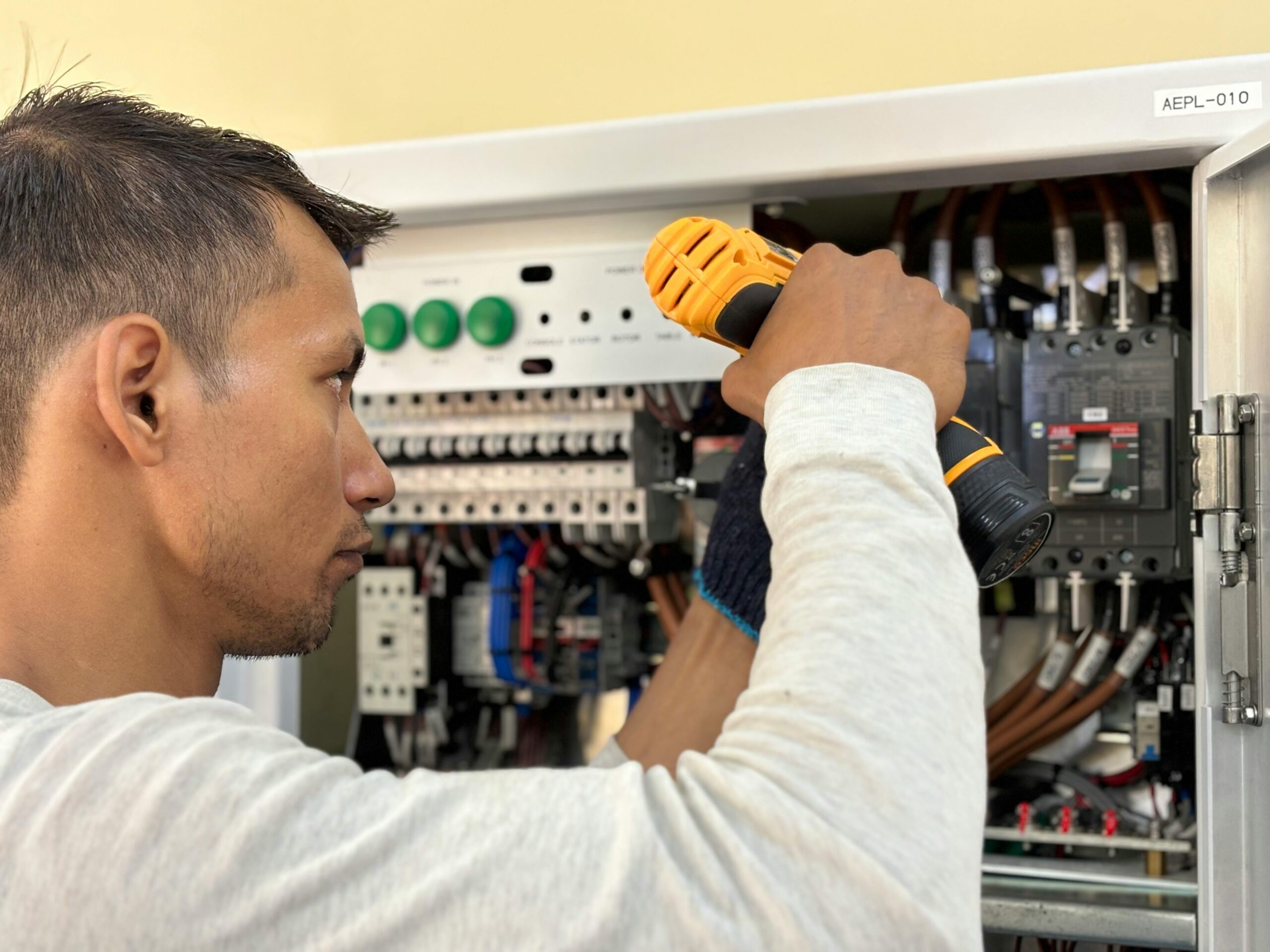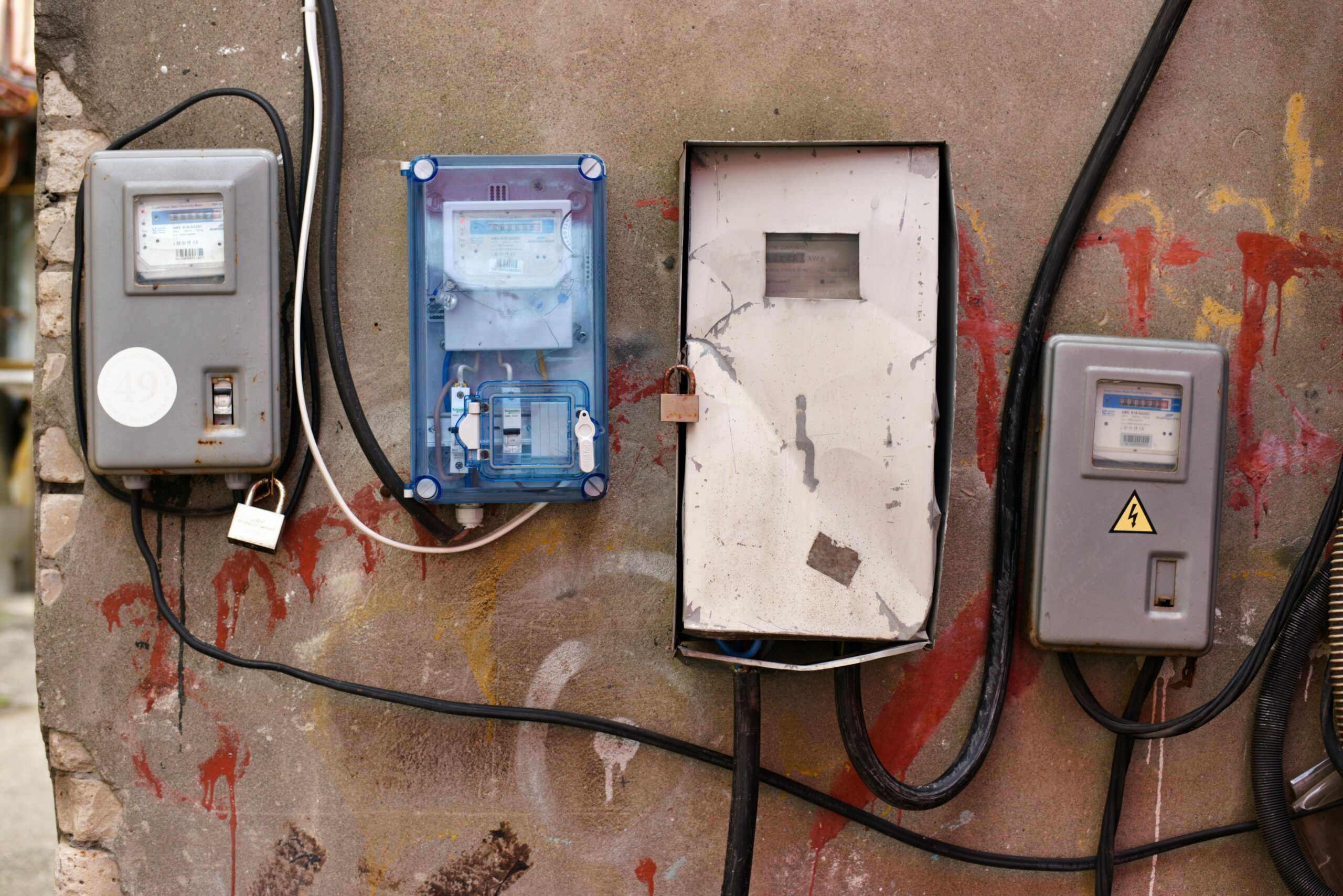Have you ever noticed flickering lights in your home? It might seem like a minor annoyance, but trust me, they can indicate some serious issues. It could be something as simple as a loose light bulb or even a complex problem with your electrical system.
Ignoring this issue could potentially lead to electrical fires or damage your home’s electrical infrastructure. Don’t worry though, in this guide, we’ll explore the reasons why your lights flicker and offer solutions for each scenario.
Our goal is to help you ensure the safety and efficiency of your home’s electrical system. So, let’s dive in and get those lights shining bright again!
Common Causes of Flickering Lights
Electrical Overload
When you have too many devices plugged into a single circuit, it can lead to an electrical overload. This means your lights might start flickering as the circuit tries to handle the high demand for electricity.
Faulty Lightbulbs
Sometimes, flickering lights can be as simple as a faulty light bulb. It could be nearing the end of its lifespan or not screwed in properly, causing it to have intermittent contact with the socket and resulting in flickering.
Loose Wiring
Loose or damaged wiring is another possible cause of flickering lights. It’s important to take this issue seriously, as it can potentially lead to electrical fires. If you suspect loose wiring, it’s advisable to call a professional electrician right away.
Voltage Fluctuations
Flickering lights can also happen due to voltage fluctuations or surges in your home. These fluctuations can occur when large appliances turn on or off, or there may be issues with the electrical grid. If you notice frequent flickering, it might be a good idea to have your home’s electrical system checked.
In-Depth Exploration of Electrical Overload
Electrical overload happens when you demand more from an electrical circuit than it can handle. It’s like packing too many things into a suitcase and it bursts open. You might overload a circuit by connecting too many appliances to it, using high-power equipment, or having faulty connections.
You can spot electrical overload by noticing flickering lights, circuit breakers that keep tripping, warm or discolored wall plates, buzzing sounds from outlets, or a burning smell near appliances. Don’t ignore these signs, as they could lead to dangerous electrical fires.
To prevent overload, spread out your devices and appliances across multiple circuits. Regularly check and maintain your electrical system, and fix any damaged parts right away. If you’re constantly dealing with overloads, it’s wise to consult a professional electrician for an assessment and necessary upgrades to your home’s electrical capacity.
Decoding Faulty Lightbulbs
There are a few different things that can cause lightbulbs to flicker. Some of the most common issues are fluctuating voltage, loose connections, outdated dimmer switches, and using incompatible lightbulbs. It’s good to know that certain types of bulbs, like fluorescent ones, tend to flicker more than others.
If you suspect a faulty bulb, a simple way to check is by replacing it with a new one and seeing if the flickering stops. If it does, then you know the bulb was the problem. If not, there might be other issues at play, like a loose connection, a faulty light switch, or problems with your home’s electrical system.
Choosing the right lightbulb is important to prevent flickering. Make sure the bulb is suitable for your fixture and compatible with any dimmer switches you have. LED bulbs are a great choice because they’re energy-efficient and less likely to flicker. However, not all LED bulbs are the same, so it’s important to choose high-quality options for the best performance and durability.
Untangling the Web of Loose Wiring
One common culprit behind this issue is loose wiring. It usually happens due to factors like age, poor installation, or just general wear and tear. Let’s dive into the risks associated with loose wires, how to locate and secure them, and why it’s important to get a professional inspection.
Loose wires can be more than just an annoyance; they can pose a serious safety risk. They have the potential to cause electrical arcing, which is when electricity jumps over gaps in the circuit, generating intense heat. If left unaddressed, this heat can actually ignite nearby materials, resulting in potential fire hazards.
Now, locating loose wires might not be the easiest task, especially if you’re not trained in electrical work. They are often found in electrical boxes, switches, or outlets.
Once you’ve located them, the next step is to secure them properly. This can be done by tightening the terminal screws or using wire connectors. But remember, it’s crucial to turn off the power before attempting any fixes to avoid accidents.
While some simple issues can be handled by homeowners, it’s always a good idea to involve a professional when dealing with electrical systems.
A professional electrician can thoroughly inspect your system, identify underlying issues that may not be apparent, and fix them properly to prevent future problems. Their expertise ensures both safety and efficiency, ultimately extending the longevity of your electrical system.
Navigating Voltage Fluctuations
Voltage fluctuations are variations in the supply voltage that can happen for various reasons. Things like sudden changes in load, fault conditions, or transformer regulation can cause these fluctuations. They can affect how well your electrical appliances perform and can be especially noticeable in lighting systems. You might see your lights flickering!
When the voltage isn’t stable, the light output can change and cause noticeable flickering. It’s not only distracting, but it can also make your lighting fixtures and bulbs wear out faster. In serious cases, it can even be unsafe.
To avoid issues like flickering lights, you can stabilize the voltage in your home. There are a few things you can do, like making sure the loads are evenly balanced across all phases, upgrading your electrical panel, or getting a voltage regulator. If you’re not sure what to do, a professional electrician can give you some guidance based on your specific situation and needs.
Advanced Troubleshooting Techniques
When it comes to lighting issues, basic troubleshooting might work for common problems. But if you’re dealing with flickering lights, it could be a sign of more serious electrical issues. Don’t worry, though! Here are some advanced methods you can try to diagnose and fix the problem.
Let’s start with using a multimeter for diagnosis. It’s a handy tool that measures voltage, current, and resistance. By connecting it to different points in your electrical system, you can pinpoint the source of the problem.
If you’re not comfortable with electrical work or the multimeter doesn’t do the trick, it’s best to seek professional help. Electrical systems can be complex and dangerous for the untrained. An experienced electrician has the skills, tools, and know-how to safely address and fix these types of issues.
Sometimes flickering lights can be caused by more intricate wiring problems like loose connections, outdated wiring, or overloaded circuits. Again, it’s recommended to leave these matters to the professionals. An electrician can inspect, identify, and repair any wiring faults, ensuring your electrical system is safe and operating optimally.
Preventive Measures for Flickering Lights
When it comes to preventing flickering lights, there are a few strategies you can try. First, regular maintenance checks by a licensed electrician can help catch any potential issues before they become bigger problems. This includes making sure bulbs are properly fitted, checking for loose wiring, and replacing any damaged or worn-out parts.
Second, if your property has an outdated electrical system, it might struggle to handle the load from modern devices. Consider upgrading your system to improve its capacity and efficiency, which can help prevent flickering lights.
Lastly, it’s important to educate residents about responsible energy consumption. By understanding the impact of overloading circuits with too many appliances, they can make smarter energy choices and reduce the chances of flickering lights.
Summary of Key Findings
So, here’s what we’ve learned: we’ve been digging into the whole flickering lights mystery, and guess what? Turns out, loose or outdated wiring, voltage fluctuations, or problems with your bulb or light fixture are usually the culprits. And here’s the thing, you gotta address these issues soon. They can cause more electrical problems and even put your safety at risk.
Speaking of which, here is why quick action is so important. If you leave these electrical issues unchecked, you could end up with serious damage, costly repairs, or even fire hazards. That’s why it’s always a good idea to call in a professional electrician when you notice that pesky flickering going on.
But hey, let’s not forget about prevention! Taking some simple measures can go a long way in keeping your electrical system efficient and safe. Regular inspections, updating old wiring, making sure you’ve got the right voltage, and using quality light fixtures and bulbs can really cut down on those flickering lights. It’s totally worth it to keep your electrical system in tip-top shape and solve the mystery once and for all.
We help companies refine their messaging, hone in their sales process, and grow their pipeline – all with a new website.






